Behind the Scores: What Opportunity Looks Like
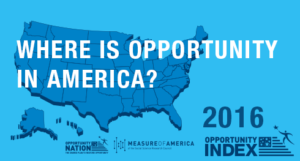 •
•
The Opportunity Index was jointly developed by Measure of America and Opportunity Nation, created for national, state and county actors to measure progress and bring cross-sector groups into a conversation about opportunity. It focuses on factors that are responsive to policy and practice changes that can improve people’s lives and strengthen communities, and has been released annually since 2011.
We’ll be bringing you stories from behind the 2016 Index scores, and we’re starting with George and New Jersey.
We’ve found through six years of the Opportunity Index that the one factor every year with the strongest relationship to a community’s Opportunity Score is the rate of disconnected youth.
One reason for this is that even under the best of circumstances, students are highly susceptible to disengaging and consequently dropping out during and immediately following their first year of high school. A program introduced by the Center for Supportive Schools (CSS) in 1979, Peer Group Connection (PGC), taps into the power of high school juniors and seniors to create a nurturing environment for incoming freshmen. It’s an evidence-based program that supports and eases students’ successful transition from middle to high school.
Most of us start high school as an overwhelmed freshman… including George.
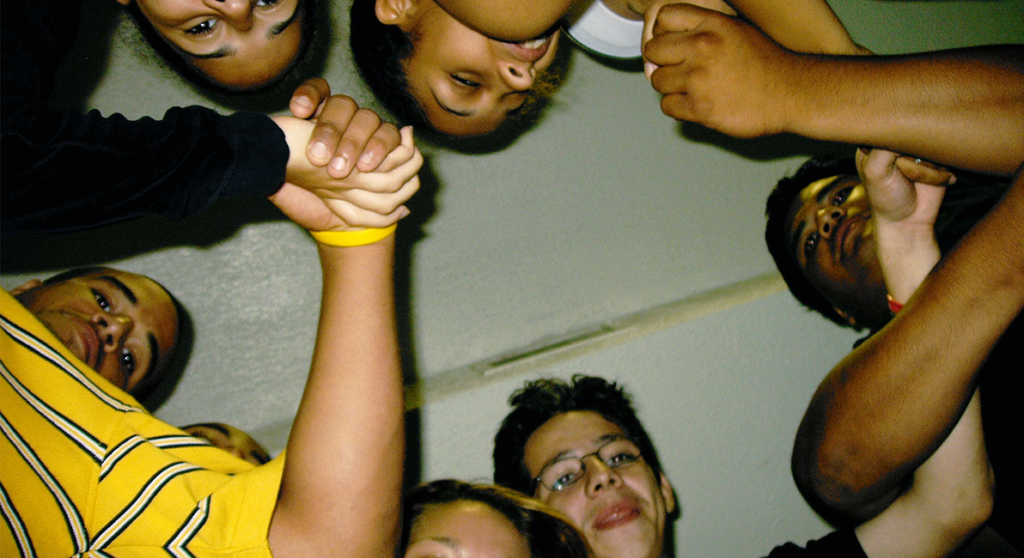
“I transitioned from a class of 22 kids to a freshman class of about 600 and I didn’t really know anyone,” George says.
George Morales grew up in Passaic, New Jersey and attended a small Catholic school until 9th grade, when he transitioned into a large public high school.
There are currently over 200 schools operating PGC across the country, including the high school George attended. (And, spoiler alert, it’s also at the high school where he’s now a teacher!)
I could’ve gone either way.
PGC introduced me to a bunch of people and provided me with good role models. Connecting with seniors was an important part of my high school experience. I didn’t know a lot of students coming into public high school – and there were a LOT of students.
I was also a lot more shy than I am now, so PGC gave me a place to express myself, talk to people from different groups, learn about and then join extracurricular activities. If I didn’t meet them and know the activities they were involved in, I probably would never have joined them. It got me involved in sports and different activities. Having that experience with PGC freshman year really helped me in getting to college. And having that focus helped with getting my degree, and be the first one in my family to do so.
On being a peer leader
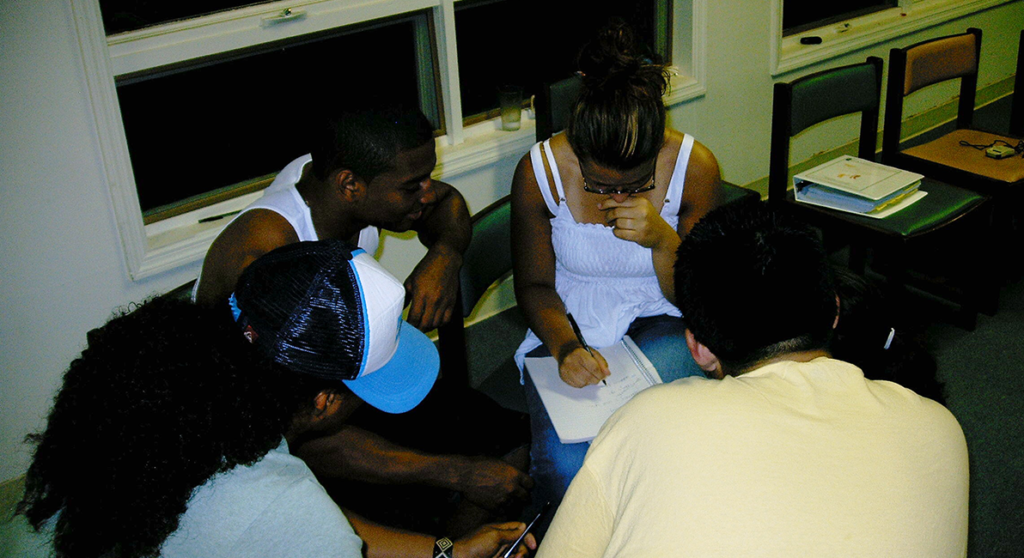
In George’s senior year, he was selected to be one of the peer leaders at Passaic High School.
Being a peer leader is pressure. As a senior you wear that PGC t-shirt. Teachers know who you are and hold you to a higher standard. You don’t want to let your teacher advisors down. And you never know who’s looking at you in school. You might be telling students to go to class early, but then not doing it yourself. But then a teacher or student could see you doing that. And you have that feeling, ‘do you want to give the program a bad name?’
So many kids apply, and only a few get chosen. In my high school when I was a student, 20 were chosen and about 100 students applied. In the current school I lead on, 14 are chosen out of 50.
As a peer leader in high school, George was trained as part of his regular school schedule in a daily, 45-minute leadership development class to become a peer mentor and serve as a positive role model and group facilitator for a group of freshmen. He worked with a partner to co-lead groups of 10 to 14 younger students in weekly sessions in which the younger students participated in engaging, hands-on activities in supportive environments.
If you’re in it the responsibility is big. As a student, you might have the assumption of who’s going to make it, but selection is not a popularity contest. It depends on who the advisors think will help the freshman class. And it’s usually a diverse group. Sometimes it’s hard to tell some kids who have been told yes so many times that maybe they don’t have the time or dedication to be a peer leader. But it’s what’s in the best interest in the freshmen.
On being a teacher and bringing Peer Group Connection to his school
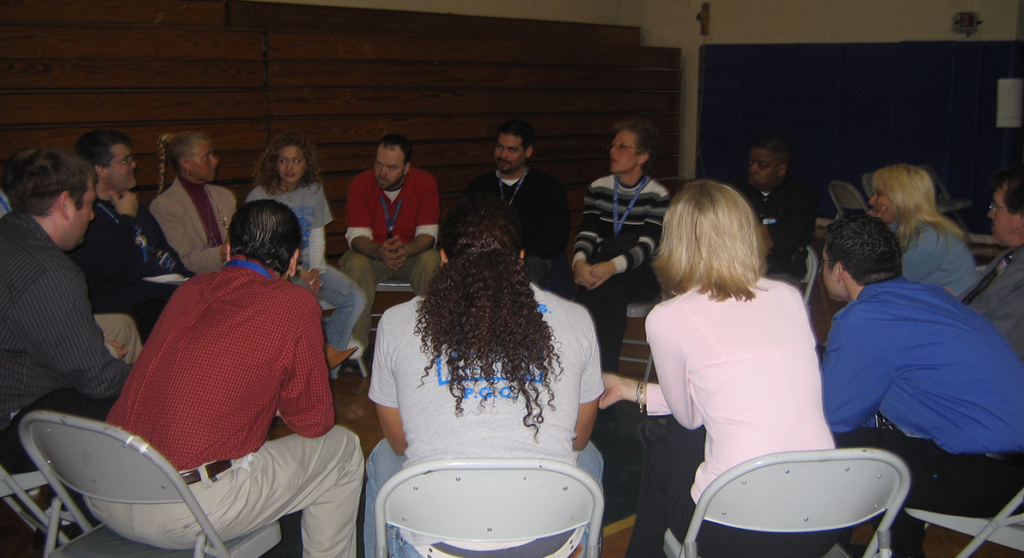
George went on to become a high school teacher in Union City, New Jersey and continues to serve as a faculty advisor 11 years after advocating for PGC to successfully operate in his school, paying it forward in support of new generations of students.
I was a first-year teacher at an event talking to my principal and mentioned that there was this program when I was in high school called PGC and that I thought it’d be good at our school. Immediately, the principal said all great things, ‘I would love that at our school let’s get this done,’ ‘why isn’t the program here. Let’s get it! Whatever you need I’ll do it.’
The program actually wanted to visit the school to give a presentation and buy the principal lunch and he immediately said, ‘I’ll do this on one condition: I buy THEM lunch. I would be glad to have them in my school.’
Programs like PGC are keeping students connected and engaged in school. A four-year longitudinal, randomized-control study released in October 2009 (conducted by Rutgers University and funded by the United States Department of Health and Human Services) found that, among other major results, PGC improved the graduation rates of student participants in an inner city public school by nine percentage points and cut by half the number of male students who would otherwise drop out.
Kids feel more comfortable going to a peer about challenging issues rather than a teacher. Here we have a large bilingual population, and those kids sometimes feel like they’re not a part of the school. Having them in PGC groups gives them a voice to get involved. Now they want to be peer leaders to start mentoring other kids from the bilingual programs that just came to this country because they want them to get involved, they want to open their eyes for all the things that the school has to offer.
On skills gained from Peer Group Connection
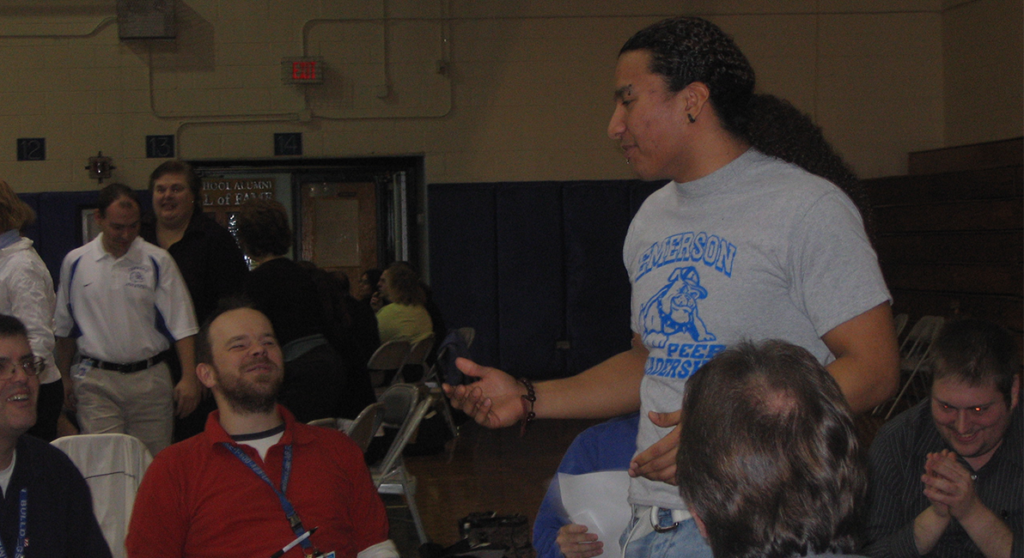
I think a lot of students who are in PGC discover leadership skills they never thought they had, including me.
Conflict resolution is a big skill I gained from PGC. Also, time management. When I started high school I didn’t manage my time as well as I should have. I still accomplished what I needed to accomplish but it was a struggle. Once I started understanding time management and how to focus, especially on what I needed to do to graduate, and also organization, it helped a lot. Even in college, I figured out my major and researched what I needed to do to graduate like I did in high school before anybody helped me do it. I had the skills I needed to be ahead.
One of the most helpful activities that PGC introduces is something called Straight Talk. You tell a person something you appreciate about them, and then something that might get in the way of a working relationship.
One of my students ran into my classroom once so excited that he’d used this tool outside the classroom. He worked in retail and a man came in very upset, yelling. My student responded with, ‘Sir I appreciate your concern, and will be able to help you with what you need if you just explain to me what that is.’ I guess the man just stopped, became immediately calmer and the situation was diffused. The student said he didn’t even realize what he was doing as the words came out.
Every year I see students enter thinking, ‘I can’t believe I’m in this room with this person. I stole a pencil from them in 4th grade,’ or ‘my friend’s ex-boyfriend is in the room,’ any variety of barriers. And then I see it happen. It works with kids from all different backgrounds: cliques in high school, breaking down barriers and working on a variety of relationships. It especially helps a situation before it gets out of hand.
For me, it’s about conflict resolution in classroom. It helps in my role as teacher, husband AND father.
What’s best for high school freshmen

As an advisor of the program, it’s sometimes interesting to see who is chosen as a peer leader because it’s not a popularity contest; the selection is based on who teachers think can truly support the next class of freshmen. When I saw a student who I’d had as a freshman – who at the time I knew was always getting into fights – on the list of possible peer leaders I remember being skeptical. Yet she ended up being one of the best peer leaders we ever had. She had so much hate and anger at the start of high school, and by her senior year wanted to show kids who might have been in the same place she was how they can also pick themselves up from rock bottom. She helped freshmen see how much they could change.
That understanding of the program doing its job usually clicks one random day – could be when a student is so into an activity that peer leaders get to step back a bit and see that change from the start of the year. Peer leaders more often than not will not get a thank you until a freshman student realizes you’re not going to be there anymore. But it IS making a difference and I tell them if you wait for it you’ll know. A lot of times I’ll have sophomores, juniors, seniors come to me sharing something they’re proud of and they’ll tell me, ‘the reason I did this is because of my peer leader.’
I see it as a part of my job as the advisor to tell peer leaders who are in college or out of college, I keep in contact with them and tell them how they’re making a difference. How their time mattered.
Index Data … and paying it forward
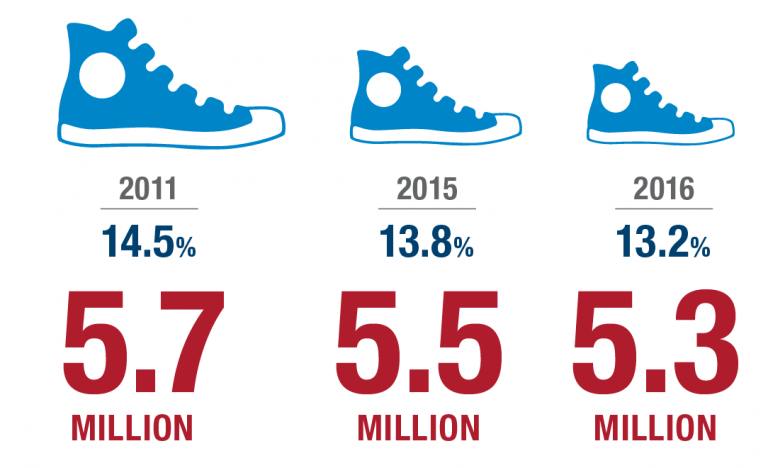
As peer leaders are about to graduate from high school, I have them write letters to the next class of peer leaders so they know what’s in store for them. It helps them understand that the year might start out difficult but it will be worth it.
According to the 2016 Opportunity Index, 5.3 million young people ages 16 to 24 are not working nor in school. This rate has fallen 4.8 percent since 2011, but remains above pre-recession levels from 2007, when 4.9 million young people were considered disconnected.
Youth disconnection is not spontaneously occurring – it’s an outcome years in the making – mirrored by education and employment struggles of parents and neighbors. Youth disconnection is the indicator most closely correlated to a community’s opportunity score. When youth do well our communities do well.
As George continues to see, PGC and other CSS programs are seeing what opportunity looks like in New Jersey, and across the country, up close.
One of my students, Alvert, jumped right into the PGC program. He used what he learned right away. He started working in student government and his desire to lead and help other people out was clear in his actions. I had him in class as a sophomore and knew he wanted to be an example for his little nephew. Alvert wanted to show him and others that no matter how much money you have or what level you’re at, you can do what’s right. He just never had the opportunity to showcase his skills.
In the 2016 Opportunity Index, New Jersey is in the top five states for overall Opportunity scores, with a score of 62 (national score is 54). It’s the top state in the education dimension. Furthermore it’s the second highest state in household incomes. New Jersey has an 88.6 percent high school graduation rate, a 1.26 percent increase since the 2015 Index, and up 4.73 percent since the 2011 Index.
Have a story from your community or state? We’d love to hear about it! Contact our Senior Communications Manager Erica Gordon at egordon@opportunitynation.org.









